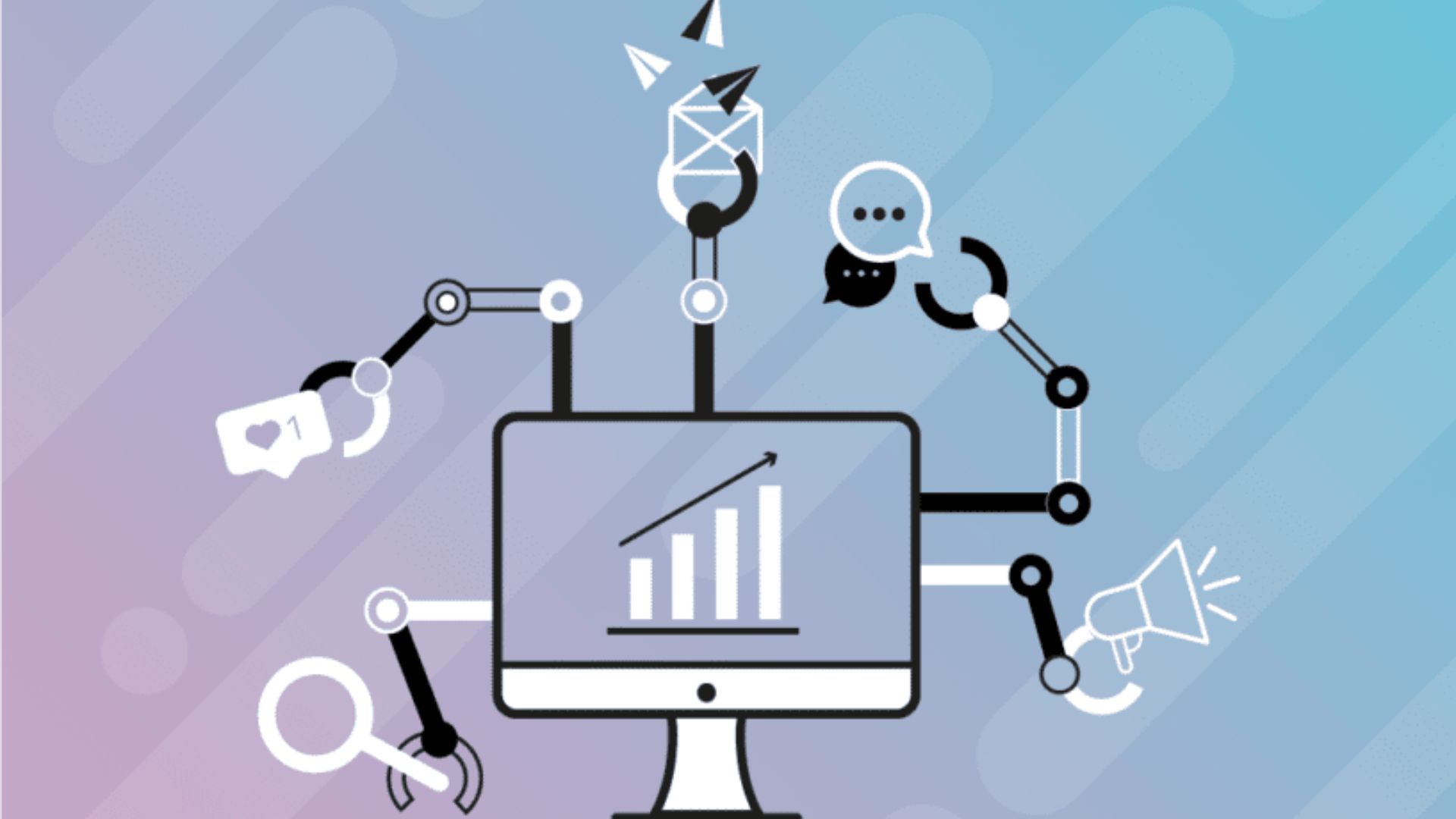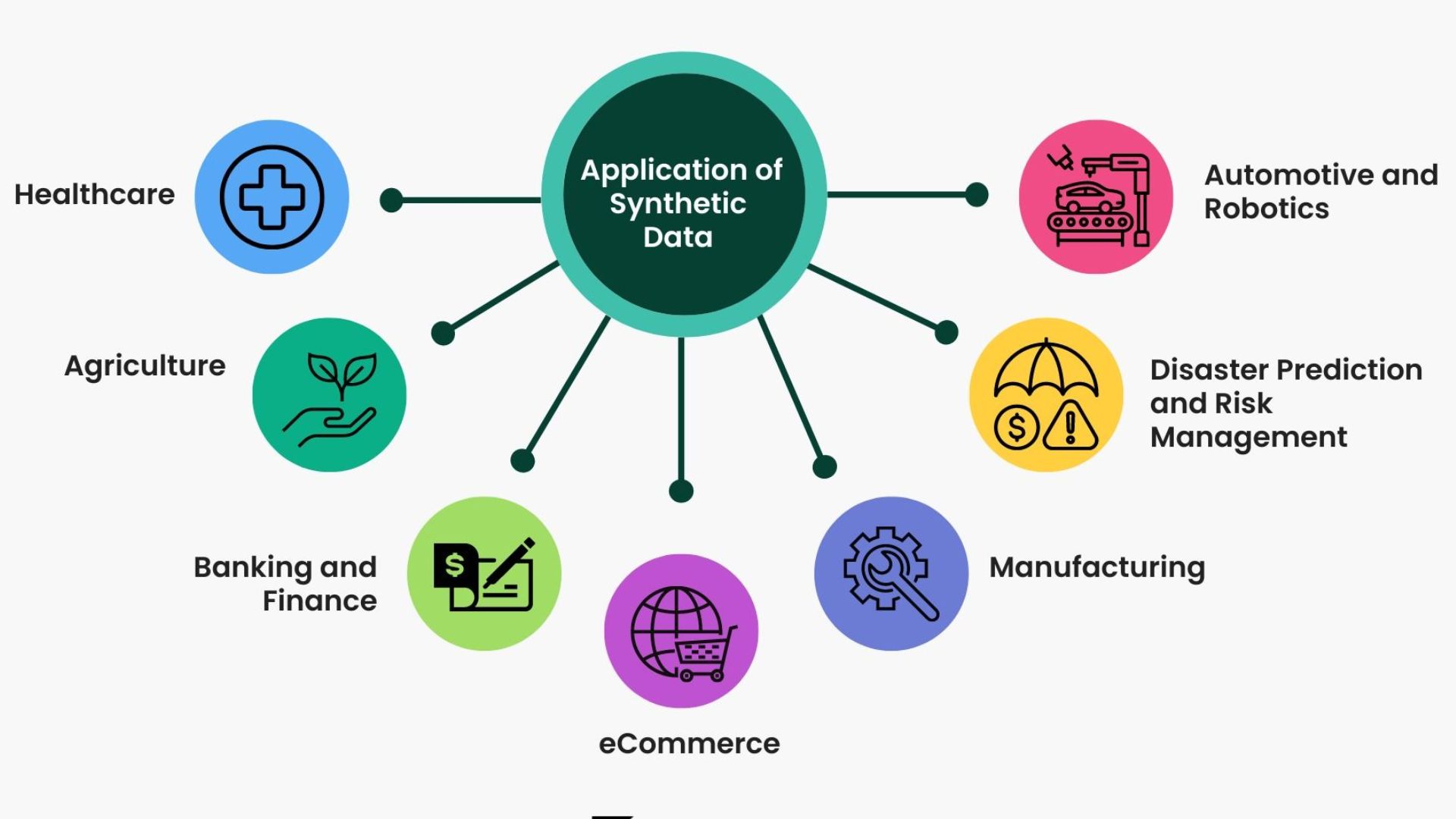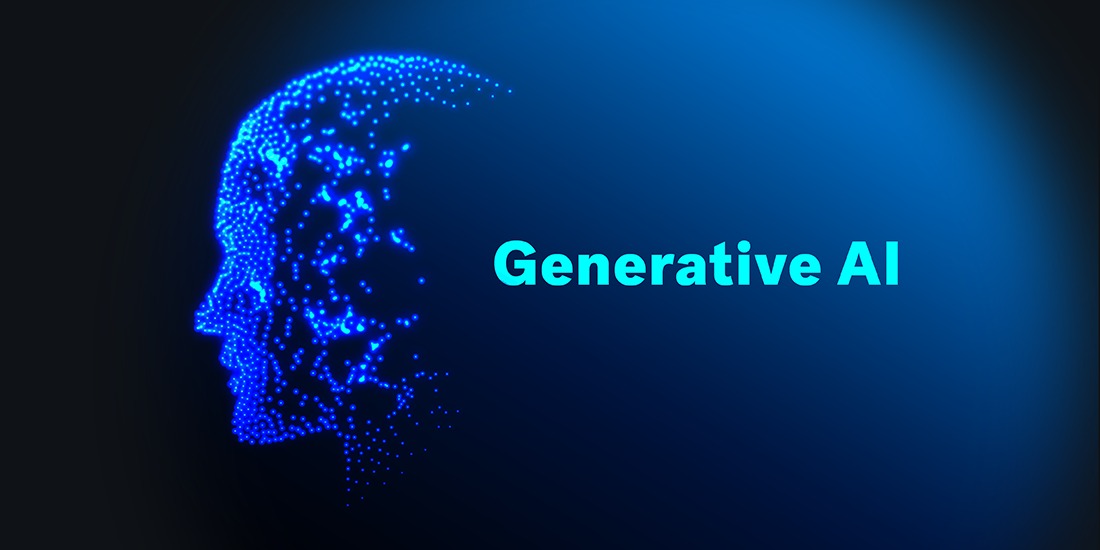
Generative AI, a cutting-edge form of AI, mimics human information production to change workplace interactions. This system autonomously generates fresh material using advanced algorithms that analyze large data sets, transforming how organizational members engage.
Generative AI automates language translation, content production, and real-time chatbot or virtual assistant interactions, enabling seamless communication. We examine the changing landscape of internal communications in this follow-up essay, emphasizing the impact of generative AI on communication methods.
We examine its ability to expedite and optimize output and argue its position as a valued companion or a disruptive force in appealing communications. The essay discusses how generative AI can improve team communication, cooperation, and communication obstacles in the digital age.
The topic "How to use generative AI in workplace communications?" guides our research of applications, impact, and implementation strategies in team processes while considering potential challenges.
Understanding Generative AI In Workplace Dynamics
The field of artificial intelligence, called generative AI, is very new because it makes information that is very similar to what people make. When looking at how things work in the workplace, it's essential to think about how to rebuild communication routes and strategy.
Complex algorithms that learn from significant amounts of data make this technology work. These algorithms can then make new content on their own. It has a significant effect on how people talk to each other at work, which changes how individuals or even groups engage.
Generative AI can automate tasks like translating languages, making content, and chatting in real-time with chatbots or virtual assistants. This makes it easier for people in a company to talk to each other.
Like automating reports that are sent over and over, sending individual messages, and making it easy to talk to people from different languages. The examples show how important Generative AI is because it makes professional communication faster, more accurate, and more flexible.
Three Ways To Use Generative AI At Work
The number of ways AI can be used is increasing as it is more fully integrated into business software and communication tools for the workplace. For every application that's running right now, there are five more that are being thought about but have yet to be put into action.
Collaborative software is an intelligent app that can help growing businesses keep up with all the necessary changes and new information going on around them.
Brain Storming
Generative AI can dull down the white space on the page. Some of the questions your team might be using to come up with long-term plans are: "What could we do if we had unlimited resources to improve our internal communication problems?"
Such as, "How can we better approach product development from the perspective of our audience?" Or you may only need something simple, like quick-turn ideas while you're writing to help you come up with new ones:
- Write down three ideas for an update for all 200 workers of an insurance company.
- Come up with five interesting subject lines for an email to employees about DEI projects.
- List the advantages of regular contact between employees in small businesses with less than 250 workers.
- How can we use our workers to make people trust and believe in our brand more?
- How can we get our workers to read the emails we send them?
Market Research
These days, AI has come a long way. Companies can start business analyses and competitive comparisons with specific instructions like "Find out what makes the top five online education platforms different from each other." You could also build on these other ideas:
- Which social media sites give restaurants the best return on investment?
- How can my company A/B test subject lines to get more employees to read them?
- What are the most important financial trends that my team needs to know about in 2024?
- What are the best ways to talk to people in different teams and a global company?
- What are the best ways for employees to talk to each other and make sure everyone is on the same page?
Research And Writing
Leaders are already using generative AI tools to make early drafts of everything from original images and production plans to data reports and emails. You can join them. Use these as starting points for your work:
- Write a report for HR about how many tech-related job prospects can be found on LinkedIn.
- Write a story with numbers about how much it costs for communication not to work.
- Make a tweet about how important it is for businesses of all kinds to communicate with each other.
- It would help if you made this into a five-page white paper.
Approaches To Tap Generative AI For Internal Communications
Streamlining Processes And Identifying Gaps
Generative AI plays a more significant role in internal messaging than just automating tasks; it also helps to streamline processes and find problems and gaps.
Generative AI helps communications teams improve workflows and work more efficiently by processing vast amounts of data and creating material that is relevant to the situation.
Enhancing Plans, Strategies, And Stakeholder Mapping
Generative AI helps internal communication teams improve their plans and strategies by looking at themes and trends that come up in meetings and talks.
It helps make a map of stakeholders and possible actions, which makes the method more targeted and effective. This data-driven information helps people make smart decisions and keeps communication plans strong.
Balancing Automation And The Human Touch
Generative AI can make things more efficient in ways that have never been seen before, but it's essential to find a balance between technology and human touch.
Communication experts can make sure that AI-generated material stays true to the organization's cultural values, tone of voice, and inclusive language. In this way, the authenticity that workers like is kept, along with the emotional connection that is necessary for good communication.
Mitigating Risks And Ensuring Trust
As generative AI becomes more common, risks like spreading false information and breaking intellectual property laws may appear. Teams in charge of internal communication need to come up with plans to check and label material made by AI.
These teams can lower risks, keep trust, and maintain the trustworthiness of their messages by acting as educators, advocates, and influencers.
Inclusive Internal Communications - A New Approach
The idea of Inclusive Internal Communications has grown as more people realize how useful it can be to have internal staff as communication partners. The method sees employees as partners and stakeholders, and it provides a way to involve and motivate staff in a good way.
It's more important now that a broader range of staff and other users is using AIrs. People who read the book on this idea were very excited about it; it hit home with them and gave them valuable tools to make their conversation more powerful.
Incorporating Generative AI - Factors To Consider
When deciding how to use generative AI in their strategies, people who work in communication can think about several things. Essential things to think about are the company's culture, its willingness to take risks, its investments in learning and development, its leadership, and its team members' ability to try new things.
The keys to a successful application are keeping track of progress, being open to new ideas, and using generative AI without overshadowing human knowledge.
Benefits Of Integrating Generative AI In Communication
Integrating generative AI into conversation has many benefits, one of which is that it makes the workplace much more efficient and effective.
Enhanced Productivity
- The goal of automating routine tasks like writing emails, reports, and summaries is to make the conversation more efficient.
- Professionals will also save time on these kinds of tasks and be able to focus on the more essential parts of their work.
Improved Collaboration
- Better cooperation makes it easier for team members to talk to each other and work real-time in real-time.
- This is done so that people can easily share their thoughts, no matter how far away they are or what time zone they are in.
Personalization And Customization
- When it comes to customization and personalization, how each tailor communicates with clients depends on their preferences and needs.
- Personalizing answers to customer service questions gets good feedback, as does finding content that fits users' interests.
Challenges And Considerations In AI-Driven Communication
There are some big problems and worries with AI-powered interactions that need to be handled with tact and care.
Ethical Considerations
- There must be no bias reinforcement in AI systems, which could lead to discrimination or unfair treatment.
- AI-made material needs to be open, accountable, and fair to avoid ethical problems.
- People who use AI tools should be careful, follow the rules when dealing with personal information, and ask for permission.
Data Privacy And Security
- We are talking about the risks that come from AI-driven communication systems processing and storing vast amounts of data without permission.
- Putting in place robust safeguards like stringent access controls, encryption, and adhering to data security regulations can achieve this.
- These things must be thought about to keep trust and confidence high because the privacy and integrity of data being sent and kept must be protected.
Quality Control And Reliability
- If AI algorithms make up false information, it could hurt the image of communication.
- They should set up quality control measures like having a person oversee the work, making sure that AI models are always learning, and making sure that the results are correct.
Overcoming Challenges In Adopting Generative AI
Addressing Privacy And Security Concerns
Privacy and safety are two of the main worries people have when they think about using creative AI for team communication. For generative AI to make accurate and trustworthy content, it needs access to big datasets and a lot of computing power.
This might make people worry about their safety and privacy. It is essential to make sure that the AI-powered tools you pick can protect data privacy and have the proper security measures in place, like encryption and access control.
Ensuring Data Quality And Accuracy
It is essential that the data that AI-powered communication tools use is correct and of good quality. To get the results you want, you need to make sure that these programs only get high-quality data.
It is the quality of the input that determines the quality of the result. Before the AI system uses their data, companies need to make sure that it is cleaned up and prepared.
Managing Change And Resistance Within The Team
Adding any new tool needs a shift in how people think and act. It's normal for teams to be against change, which is why it's essential to manage it well. Giving the team regular reports, getting them involved in the implementation process, and listening to their concerns are all very important for making sure that adoption goes smoothly.
It's also essential to let the team know why using AI-powered communication tools is a good idea. This will help them understand how valuable the technology is and how it can help them do their jobs better and faster.
Limitations Of Generative AI For Enterprise Comms
We need to know what creative AI can't do before it can become the internal communications assistant we want it to be. These can be put into three main groups:
- Data Biases- Generative AI models use data from the past to come up with ideas. In other words, it can pick up the biases from the material it was trained on. Because of this, your generative AI assistant might give you replies that reinforce negative stereotypes.
- Data Security- Generative AI models keep getting more intelligent as you give them data. That means that any private business information that is put into the system is kept in one place for a while. Companies that need to keep their data safe will have to be very careful about what they put into the system.
- Output Quality - Generative AI systems don't have emotional intelligence or the ability to think critically. This means that the copy that is made might not catch the context or be sensitive to emotions. Responses can also be given more than once, which can lead to duplicate copies.
The job of a dispatcher is safe until these problems are fixed, which is still a long way off. Now more than ever, we need the sharp eye of a speaker to help us guide, check out, and humanize. To fully use generative AI as a communications partner, it needs to be carefully pushed in the right direction and made better.
Future Trends - AI's Potential In Workplace Interaction
It's like thinking about how AI could be used in the workplace to look into a possible future where tremendous progress may have been made. As AI technologies develop, we can expect algorithms and machine learning to get better.
Advancements In AI Technology
- Creating more complex programs that can learn from machine data better.
- Improving how we understand natural language so that we can connect with things in context.
- Augmented reality (AR) and virtual reality (VR) are being used at work.
AI-Powered Predictive Analysis
- Predictive analytics is an excellent way to guess what the following significant communication needs and trends will be.
- In this way, decisions are made before things actually happen, and experiences are used to predict future trends.
- When predictive intelligence is used to target communication methods, the best results are seen.
Human-AI Collaboration
- Modern trends suggest that people and AI systems are becoming more open to working together and living together.
- AI does the tedious tasks while people use their unique thinking skills.
- This mutually beneficial relationship between AI and humans leads to high productivity and creativity, which in turn improves human abilities.
Frequently Asked Questions
How Can Generative AI Be Used To Improve Employee Communications?
Generative AI can enhance internal communication by automating routine messages, providing personalized updates, and facilitating natural language interactions.
How Will AI Be Used In The Workplace?
AI streamlines tasks boosts productivity, and enables data-driven decision-making across various functions, from HR to project management.
How Can Generative AI Be Used In Business?
Generative AI creates content, automates customer interactions, and assists in creative processes, contributing to innovation and efficiency in business operations.
How Is AI Used In Business Communication?
AI optimizes communication through chatbots, language translation, and sentiment analysis, fostering better customer engagement and internal collaboration.
Conclusion
Organizations seeking efficiency and creativity can improve workplace communications using generative AI. Generative AI transforms corporate communication by automating regular tasks, optimizing processes, and encouraging collaboration.
Generated AI aids organizations in brainstorming, market research, and research and writing by providing new insights and fostering creativity. However, ethical issues, data protection, and the need to balance automation with the human touch must be considered.
With advances in technology, predictive analysis, and human-AI collaboration, organizations may continue to evolve how they utilize generative AI to answer How to use generative AI in workplace communications? Embracing this change intelligently and considering difficulties and possibilities can create an efficient, human-centric communication paradigm.




